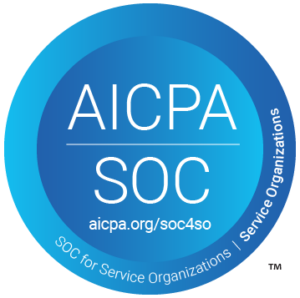The landscape of home care is evolving rapidly, driven by an aging population, technological advances, and changing patient expectations. Traditionally, the home care sector has been highly fragmented, with different service providers offering specific sets of services—often without coordination or a unifying goal.
This fragmented approach has led to inefficiencies, increased costs, and sometimes even adverse health outcomes. A patient-first or person-centered approach, by contrast, seeks to put the individual at the center of care provision, creating a cohesive and integrated experience. In this blog, we explore the differences between these two approaches and why a shift towards a patient-first perspective is imperative.
Insights here reflect a recent webinar, featuring Kat Gesh-Wilson, Vice President-Medicare Advantage, BlueCross BlueShield of South Carolina, and Paul Pino, Chief Development and Analytics Officer at IHCS. They joined moderator Dan D’Orazio, CEO of Sage Growth Partners, to explore the role of the home care benefits manager in improving outcomes and patient experiences.
Understanding the Fragmented Approach to Home Care
The fragmented model of home care often involves multiple service providers offering different services such as nursing care, physiotherapy/rehabilitation services, meal preparation, infusion services, and distribution/coordination of durable medical equipment (DME). Each service operates independently, often without effective coordination or a shared care plan. While the service itself might be of good quality, the overall experience can be inconsistent and stressful for both the patient and their family.
4 Drawbacks of the Fragmented Approach
1) Inconsistent Quality of Care
In a fragmented home care system, it’s not uncommon for patients to experience inconsistent quality across various services. For instance, a patient may have access to top-notch nursing care but may find that the infusion services are lacking in expertise or resources.
This discrepancy is often the result of different training standards, protocols, and even philosophies that each service provider adheres to. Some may excel at patient interactions and provide excellent emotional support, while others may focus solely on delivering a specific type of care, neglecting the overall wellbeing of the patient. This can leave gaps in the patient’s treatment and contribute to anxiety or dissatisfaction, as the patient or family is left to navigate these inconsistencies.
2) Increased Costs
The fragmented approach to home care can create redundancies that drive up costs. In the absence of a centralized coordinating body or a unified electronic health record system, service providers may duplicate services or recommend unnecessary treatments.
For example, the same diagnostic tests may be ordered by different specialists involved in a patient’s care, purely due to a lack of communication or shared documentation. These inefficiencies can be financially draining for patients and health insurance systems alike. Increased costs also make it less likely that the patient will have access to additional services that could actually benefit them, as resources are wasted elsewhere.
3) Reduced Effectiveness
A lack of coordination and a unified care plan can result in treatments that work at cross purposes. For example, one provider might prescribe a medication that interferes with another medication prescribed by a different provider, or a physiotherapy routine might exacerbate a condition that another provider is trying to manage. This lack of a holistic approach can lead to slower recovery times, complications, or even deterioration in the patient’s condition.
Moreover, it places the onus on the patient or their family to somehow integrate these disparate pieces of medical advice and treatment, often without the medical background to do so effectively. This lack of cohesion not only adversely affects health outcomes but also leads to deteriorating trust in the healthcare system.
4) Communication Gaps
In a fragmented care system, communication gaps are pervasive and contribute to nearly all other issues mentioned. Since different providers work in silos, essential information about a patient’s condition, medication, preferences, and past treatments might not be shared efficiently. This lack of communication can result in mistakes such as medication errors, duplicated services, and conflicting medical advice.
All too often, a patient’s emotional and psychological state may not be communicated effectively among providers, contributing to additional missed opportunities for holistic care. In some extreme cases, these communication gaps can even lead to life-threatening errors or complications.
Each of these drawbacks underscores the urgent need for a more integrated, patient-first approach in home care. By putting the focus on the patient and streamlining the entire care process around their unique needs and circumstances, it’s possible to elevate the standard of care, reduce costs, and most importantly, improve patient outcomes.
A Better Alternative: Patient-First Approach
In a patient-first approach, the focus shifts from service provision to the individual receiving care. This approach recognizes that each individual has unique needs, preferences, and goals that must be respected and integrated into a singular, comprehensive care plan. Here are some of the most significant advantages surrounding a patient-first strategy.
1) Patient Centered Care
Patient-centered care is one of the cornerstones of a patient-first approach, aiming to treat the whole person rather than merely addressing specific symptoms or diseases. In this model, healthcare providers consider the individual’s emotional, social, and psychological needs in addition to their physical conditions.
For example, in a person-centered home care environment, a nurse might not just administer medication but also spend time discussing the patient’s emotional wellbeing and quality of life. By understanding the bigger picture, healthcare providers are better equipped to offer comprehensive and personalized treatment plans that encompass all aspects of an individual’s health.
2) Reduced Costs
In a patient-first approach, cost efficiencies naturally arise from the streamlined and coordinated care. A unified care plan managed by a single entity eliminates duplicate tests, uncoordinated interventions, and conflicting treatments. This leads to more efficient utilization of healthcare resources, including staff time and medical supplies.
Additionally, when providers work collaboratively and share information efficiently, they can make quicker and more accurate diagnoses, thereby speeding up the treatment process and further reducing costs.
3) Improved Quality
When healthcare providers work in a cohesive, integrated manner, the cumulative expertise contributes to a higher standard of care. Not only can medical staff cross-consult and share best practices, but a centralized care plan also means that each provider is aware of the full range of treatments and interventions a patient is undergoing. This mutual awareness minimizes the risk of conflicting treatments and ensures that everyone is working towards the same health outcomes, thereby elevating the overall quality of care provided.
4) Enhanced Patient Experience
The patient-first approach inherently respects the dignity and individuality of each patient. This shift towards a more humanized form of healthcare allows for greater patient satisfaction. Patients feel heard, valued, and involved in their own care, which has been shown to improve adherence to treatment plans and generally result in better outcomes. It also alleviates the stress and confusion that can come from dealing with a fragmented healthcare system, offering a seamless, more comfortable experience for both the patient and their family.
Implementing a Patient-First Approach
While a patient-first approach won’t fall into place overnight, there are ways to expedite this strategy. The following represent four areas in which plans and providers can focus their attention. It’s incredibly valuable to have a home care benefits manager at the helm, to ensure various tactics actually make a significant impact.
Integrated Technology
Technology can play a pivotal role in transitioning to a patient-first approach. Implementing electronic health records that are accessible to all providers involved in a patient’s care ensures that everyone has access to the same information. This facilitates more informed decision-making and smoother coordination between various services, from medical treatment to social care.
Training
Shifting to a patient-first model involves not just organizational changes but also a shift in mindset among healthcare providers. Training programs in person-centered care philosophies, empathic communication, and holistic treatment can equip staff with the necessary skills and attitudes to provide genuinely integrated care.
Engagement
Patients and their families should be central players in the planning and delivery of care. Their needs, preferences, and values should guide the care plan, and they should be consulted regularly to ensure that the care provided aligns with their expectations and improves their quality of life.
In the webinar, Pino, Gesh-Wilson, and D’Orazio all agree that caregivers play an integral role in ensuring home care is effectively and efficiently implemented. They also recognize that caregivers require their own care. At IHCS, we offer respite care services as part of our home care benefits management. This allows a caregiver to have the time and space they need to reset and recoup their energies.
“Offering unique ways to make sure [caregivers] are also getting care is absolutely critical. Having a local presence, and creating a relationship that develops over time, builds trust. As much as we hate to admit, there is a lot of mistrust in healthcare, especially when these caregivers are the ones serving as the primary point of contact,” shares Gesh-Wilson.
Some of that mistrust relates to reimbursements. Family members and caregivers often wonder, “Is this service really necessary?” To that end, Pino offers his assurance.
“We never leave a patient’s home with the patient or caregiver wondering what it is they can do to help. We’re never focused on waiting for a phone call so we can charge another visit to Kat [Gesh-Wilson] and her team. That’s a significant difference in what we offer at IHCS.”
Quality Metrics
The transition to a patient-first approach should be accompanied by a change in how success is measured. Traditional metrics might focus solely on clinical outcomes or cost efficiency, but a patient-first model would include measures like patient satisfaction, mental wellbeing, and other quality-of-life indicators to provide a more rounded view of how effectively the care system is performing.
By adopting a patient-first approach to home care, we can address the pitfalls of the fragmented system, providing not just more efficient and higher-quality care but also a more humane and respectful experience for those who need it most.
Home Care: An Industry Ripe for Change
While the fragmented approach to home care has been the norm for years, the sector is ripe for change. A shift to a patient-first approach—grounded in the principles of holistic, individualized care—offers a viable and more effective alternative. It promises not only improved health outcomes but also a more humane, respectful, and fulfilling experience for those in need of home care services. By adopting this approach, we can make strides towards a healthcare system that truly serves the best interests of its patients.
In the forthcoming third blog in this series, we highlight why partnerships such as that between IHCS and Medicare Advantage entities are so important, as well as what Pino and Gesh-Wilson view as the future of home care and the home care benefits manager. If you missed the first blog, you can find it here.












